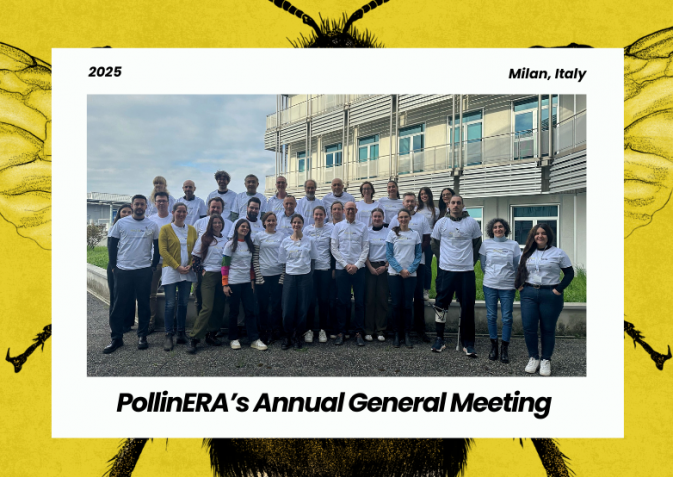PollinERA 2025 Annual General Meeting in Milan: A Shared Look at Progress and Next Steps

The PollinERA project held its 2025 Annual General Meeting (AGM) on 18-19 March in Milan, Italy, hosted by the Istituto di Ricerche Farmacologiche Mario Negri. The two-day event brought together project partners and collaborators to reflect on recent developments, share ongoing research, and coordinate efforts for the months ahead.
The meeting opened with remarks from the project coordinator, Christopher John Topping (Aarhus University), who provided a brief overview of the project's objectives, welcomed new members, and set the stage for the discussions. He was followed by Johan Axelman (KEMI), who presented the PollinERA One System framework and outlined the project’s primary goals.
As part of the agenda, the consortium hosted a publicly accessible webinar to showcase project achievements to a broader audience. A range of core topics was covered during the session:
- Fabio Sgolastra (University of Bologna) introduced test protocols for acute oral and contact exposure in pollinator ecotoxicology.
- Anna Lombardo (Istituto Mario Negri) provided an introduction to the structural alerts approach for the mechanism of action towards pollinators.
- Florian Schunck (Osnabrück University) presented the development and calibration of the formal TKTD (toxicokinetic/toxicodynamic) model ('bufferGUTS') using Osmia bicornis as a case study.
- The European Commission’s project officer, Sofie Vandewoestijne, also joined the meeting and shared her reflections on the project’s progress and importance.
- Fieldwork updates were provided by Maj Rundlöf (Lund University), who presented co-monitoring activities related to pesticide use and pollinator observations conducted in Italy, Poland, and Sweden in 2024.
Further presentations included ongoing work on pollinator exposure and sensitivity, shared by Fabio Sgolastra, while Emilio Benfenati (Istituto Mario Negri) reported progress in the area of predictive toxicology. Andreas Focks (Osnabrück University) provided an overview of developments in pollinator modelling, contributing to a deeper understanding of exposure dynamics. Maj Rundlöf (Lund University) presented information on monitoring activities and risk indicators of pesticide exposure, followed by a discussion session with attendees. Xiaodong Duan (Aarhus University) introduced a systems approach accompanied by relevant policy instruments designed to enhance coordination and maximise the overall impact of the project’s efforts.
Concluding the series of presentations, Nini Pkhakadze (Pensoft Publishers) outlined ongoing activities in scope of communication, dissemination and exploitation. She was later joined by Noa Simon Delso (BeeLife) and James Williams (Aarhus University), who presented updates on stakeholder engagement and exploitation efforts under Task 6.
As part of the upcoming social media campaign Explaining PollinERA, Pensoft Publishers conducted a series of video interviews with representatives from partner institutions. These interviews aim to clarify fundamental concepts and terminology central to the project, offering accessible explanations to help a broader audience better understand the scientific and technical foundations of PollinERA. The campaign is designed to support outreach and engagement by making key topics more approachable. Stay tuned to PollinERA’s social media channels for the launch of this campaign and to stay informed as new content is released.
The Annual General Meeting provided a valuable opportunity to exchange knowledge, highlight collaboration, and maintain momentum across the project. The partners will continue working closely to ensure coordinated progress throughout the upcoming phases of PollinERA.